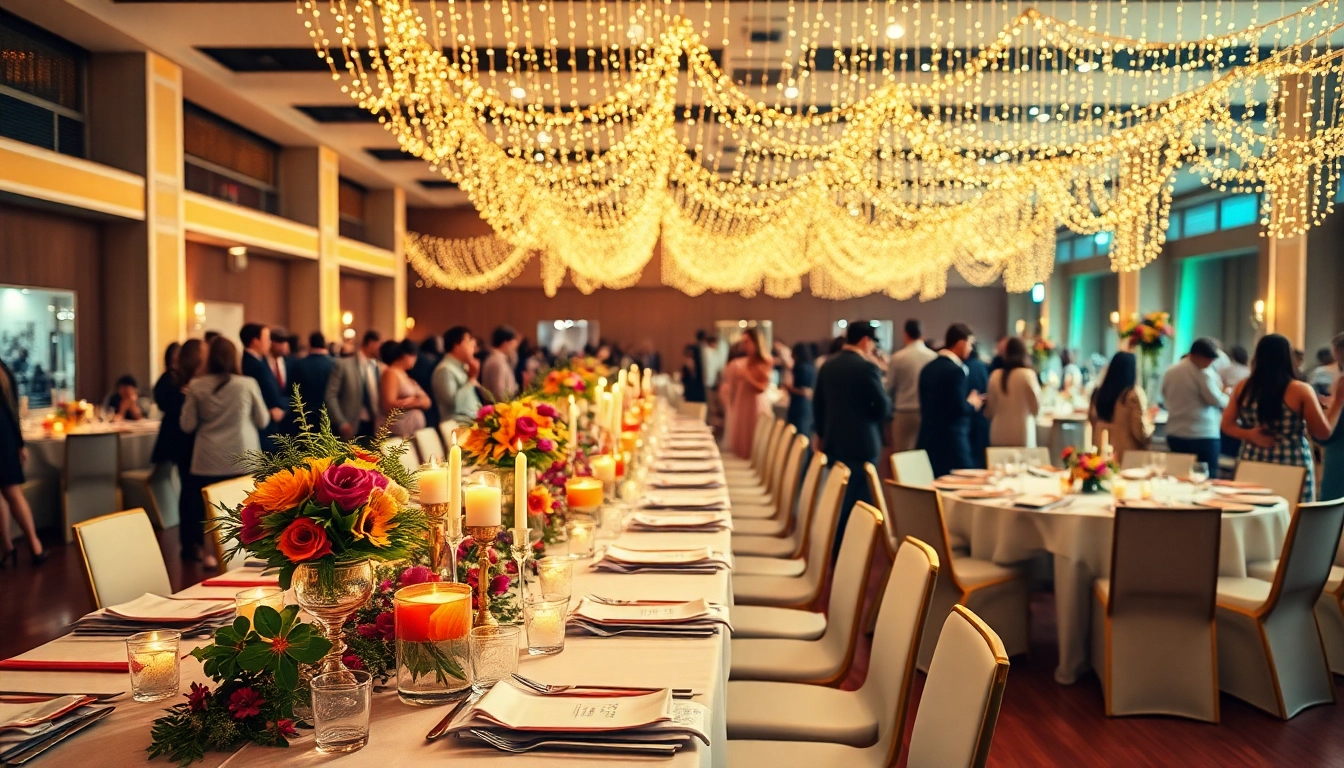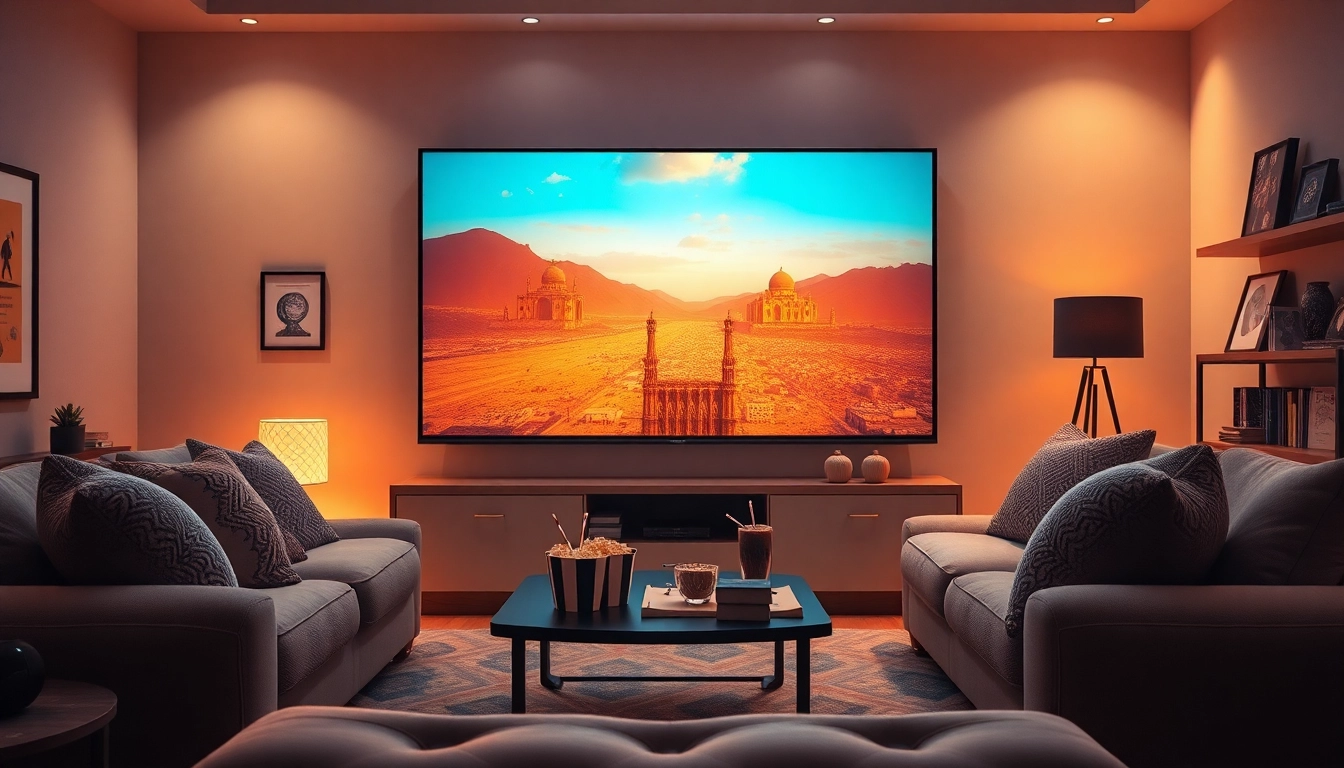Understanding Indoor Events: Definition and Importance
Indoor events are gatherings that take place within enclosed venues, such as conference halls, banquet rooms, theaters, or even private residences. The nature of indoor events allows for controlled environments, which can enhance the attendee experience significantly. From corporate meetings that require focused collaboration to social occasions that celebrate personal milestones, understanding the scope and significance of indoor events is essential for anyone involved in organizing or attending these occasions. As the demand for engaging and well-executed indoor events continues to grow, the importance of strategic planning and execution cannot be overstated. Notably, those planning indoor events can find valuable insights and tips at indoor events.
What Constitutes Indoor Events?
Indoor events encompass a diverse range of activities and gatherings, including but not limited to corporate meetings, seminars, workshops, wedding receptions, art exhibitions, performances, and parties. They can be formal or informal, ranging from intimate dinners to large-scale trade shows. The defining characteristic that unites all indoor events is their setting within a structure, which distinguishes them from outdoor activities where environmental factors—such as weather and location—play a significant role.
Why Choose Indoor Events Over Outdoor Options?
There are several compelling reasons to choose indoor events over outdoor alternatives. First and foremost, indoor venues provide protection from inclement weather, ensuring that events run smoothly without the interference of rain, heat, or wind. Additionally, indoor spaces are typically equipped with necessary amenities such as climate control, lighting, sound systems, and seating arrangements that can be customized to fit the event’s requirements. This versatility allows for greater creativity in event planning and execution.
Key Benefits of Hosting Indoor Events
Hosting indoor events offers numerous benefits that can enhance the experience for both organizers and attendees. Some of these advantages include:
- Controlled Environment: Indoor venues allow for precise control over elements like temperature, lighting, and acoustics.
- Accessibility: Many indoor venues are designed to be accessible to individuals with disabilities, ensuring a more inclusive experience.
- Privacy: Indoor settings can provide a more intimate atmosphere for personal gatherings, offering privacy for social events and deeper engagement for corporate functions.
- Enhanced Logistics: With fewer variables to manage, logistics planning—such as catering, seating, and audio-visual needs—becomes more straightforward.
Types of Indoor Events and Their Unique Features
Corporate Indoor Events: Seminars and Conferences
Corporate indoor events are typically designed to foster professional development, networking, and collaboration. Seminars and conferences often include keynote speakers, breakout sessions, and networking opportunities that encourage knowledge sharing and industry engagement.
These events require meticulous planning, often necessitating the coordination of schedules, agendas, and guest speakers. The venue’s layout must support various activities, including presentations, workshops, and informal gatherings, thereby maximizing interaction among attendees.
Social Indoor Events: Weddings and Parties
Social indoor events, such as weddings and parties, celebrate personal milestones and create cherished memories. Weddings, in particular, depend on a multitude of factors including the couple’s vision, the venue’s aesthetic, and the preferences of guests. Often, couples seek themes that resonate emotionally, ensuring their special day reflects their unique relationship.
Moreover, social events are often guided by considerations such as catering choices, entertainment options, and décor that align with the event’s theme. Understanding these elements becomes essential for creating an inviting and enjoyable atmosphere for all attendees.
Cultural Indoor Events: Art Exhibitions and Performances
Cultural indoor events celebrate arts and creativity, showcasing artistic achievements through exhibitions, performances, and showcases. Venues for these events range from galleries and theaters to community centers, where artists can connect with audiences and engage deeply with their work.
Promoting cultural events involves not only logistics—like scheduling and venue selection—but also effective marketing strategies to attract attendees. Ensuring accessibility and creating visually stunning presentations can help forge connections and foster appreciation for the arts within the community.
Effective Planning for Indoor Events
Setting Clear Objectives and Goals for Indoor Events
Successful indoor events begin with well-defined objectives and goals. Event planners must establish clear intentions, whether that includes generating leads, fostering community connection, or simply providing entertainment. Identifying specific targets helps guide the planning process and enables measurable outcomes.
For instance, a corporate seminar might aim to increase product knowledge among attendees, whereas a wedding might focus on fostering connections between families. These anticipated outcomes shape decisions regarding topics, formats, and structures.
Budgeting: Allocating Resources Wisely for Indoor Events
Budgeting is a critical aspect of indoor event planning that requires careful consideration of available resources and projected expenses. Every detail, from venue costs and catering expenses to AV equipment rentals and décor, must be factored into the budget.
To maintain financial discipline, event planners should prioritize key expenses while identifying areas for potential savings. Using checklists and tracking software can help streamline budgeting processes, ensuring that funds are allocated efficiently as plans evolve.
Choosing the Right Venue for Indoor Events
Selecting the appropriate venue for indoor events can significantly impact attendee experience and event success. The venue should align with the event’s goals, accommodate the expected number of guests, and possess essential amenities like audio-visual equipment, catering options, and adequate parking.
When possible, it’s advisable to conduct site visits to assess the venue’s atmosphere, accessibility, and layout. Moreover, understanding the venue’s policies and restrictions, including any technical support offered, can prevent surprises closer to the event date.
Curation of Themes and Decorations for Indoor Events
Popular Themes for Indoor Events
Every indoor event benefits from a cohesive theme that resonates with its purpose and audience. Some popular themes include:
- Rustic Charm: Perfect for weddings and casual gatherings, this theme emphasizes natural elements like wood, lace, and greenery.
- Modern Elegance: Characterized by sleek designs and minimalistic décor, it fits formal corporate events and upscale parties.
- Vintage Steampunk: This creatively intricate theme blends historical nostalgia with whimsical elements, enhancing private parties and cultural exhibitions.
How to Select Decorations that Enhance Indoor Events
Choosing decorations that complement the event theme can elevate the overall experience for attendees. The selections should reflect the mood and atmosphere intended for the event. For instance, vibrant colors and playful designs might appeal to a birthday party, while more subdued tones create a sophisticated aura for corporate events.
Additionally, focal points like centerpieces, backdrops, and entryways should be strategically placed to draw attention and set the tone. Engaging with professional decorators can provide insights into current trends and help achieve desired visual impacts.
Lighting Techniques to Elevate Indoor Events
Lighting plays a crucial role in indoor events, influencing mood, ambiance, and even functionality. Utilizing various lighting techniques can help transform a venue: from dramatic uplighting that showcases architectural features to soft ambient lighting that enhances intimacy for social events.
Event planners should consider combining different types of lighting—including LED fixtures, string lights, and spotlights—to create layered effects. Moreover, adjusting lighting throughout the event can guide the flow—brightening for networking sessions and dimming for entertainment.
Measuring Success: Post-Event Analysis for Indoor Events
Determining Metrics for Indoor Events Success
Post-event analysis is essential for gauging the success of indoor events and identifying areas for improvement. To do this effectively, planners must establish measurable metrics before the event, which may include attendance rates, participant engagement levels, and feedback scores.
Using tools such as surveys and analytics software can provide vital insights into attendees’ experiences, helping to create data-driven strategies for future events.
Gathering Feedback: Engaging Attendees After Indoor Events
Gathering feedback from attendees after indoor events is an invaluable practice that helps to shape future initiatives. Engaging participants through surveys, interviews, or social media can uncover strengths and weaknesses in planning, venue choice, and execution.
Feedback should be structured to elicit actionable insights. Questions can focus on aspects such as content relevance, venue comfort, and overall satisfaction. Collecting qualitative and quantitative feedback creates a comprehensive view of attendee experiences.
Implementing Improvements for Future Indoor Events
Each indoor event serves as a learning opportunity. The insights gathered from post-event analysis should inform planning for subsequent events, creating a continuous cycle of improvement. Adjustments might include refining objectives, modifying budget allocations, selecting different venues, or enhancing the attendee engagement strategy.
By keeping an open line of dialogue with attendees and implementing feedback, organizers can ensure that future indoor events not only meet but exceed expectations, creating memorable experiences that resonate with guests.

